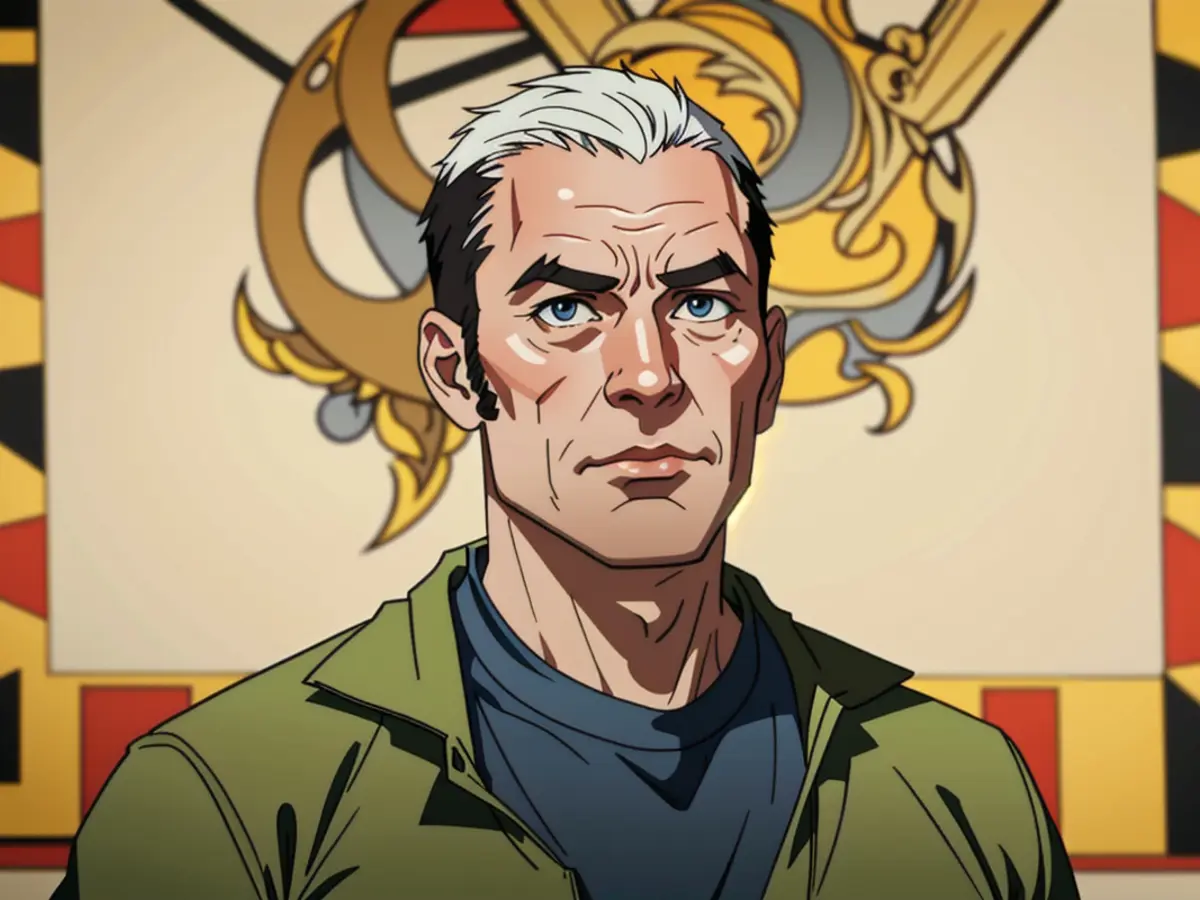The Real Deal in Kursk: Major Reisner's Take
"Being in proximity to Sudsha could prove deadly"
Facebook Twitter Whatsapp E-Mail Print Copy Link
The open expanse of Kursk has seen the weight of war, with Major Reisner, in an interview with ntv.de, explaining that anyone digging in behind Sudscha would be signing their own death warrant. As the city falls, the Ukrainian offensive ends, he asserts. Defensive preparations must now be in place, as Russian troops close in.
ntv.de: Mr. Reisner, as Russian forces threaten the city of Sudscha in the Kursk region, you've said that if Sudscha falls, the offensive is over. Has that moment arrived?
Markus Reisner: Indeed, the urban hub of Sudscha was the key to maintaining the Kursk region held by the Ukrainians. The city, due to its urban nature, provided ample opportunities for defensive combat, but it's now lost. The only thing behind it is open farmland, making it impossible to fortify. Hence, the offensive is over. The Ukrainians won't explicitly admit defeat, but military-wise, the Kursk operation has concluded.
What narrative are the Ukrainians spinning?
"We've been able to halt Russia's advance for a considerable length of time and continue to slow them down" — that's the spin the Ukrainians are peddling, while the Russian side boasts, "We have the upper hand." While I don't intend to blindly adopt the Russian narrative, from a military perspective, the Kursk operation is over. We're witnessing a final consolidation from the Russian side, elimination of the last resistance, and attempts to capture Ukrainian soldiers.
Donald Trump's Claim of Surrounded Troops:
Last week, US President Donald Trump declared that thousands of Ukrainian soldiers were encircled. He asked Russian President Vladimir Putin to spare the prisoners, who Putin agreed to treat well. However, no front observer has been able to find this encirclement yet.
A Misguided Report:
The reports of up to 7,000 Ukrainian soldiers being encircled are misleading. Between Sudscha and the border, there are still a few Ukrainian units making a retreat. Ukrainian units are disbanding and retreating, sometimes on foot. For the soldiers to be encircled, the Russians would need to complete their encirclement along the border, which isn't apparent at the moment. Instead, the opposite seems to be happening — Ukrainian refugees are flooding back, being absorbed by their own forces beyond the border.
Where are the Pictures?
Evidence of intense battles of these Ukrainian groups, hundreds captured, or changed uniforms haven't emerged. To back up their narrative of the surrounded Ukrainians, we would need images or videos – something we haven't seen so far on the information warfare level. As an example, recall the capture of Mariupol, where hundreds of Ukrainians were taken prisoner, and prisoners were marched in columns, showing their tattoos. The Russians exploited Mariupol in the media, but that isn't the case now.
The War in Kursk: A Snapshot
We see smaller groups of soldiers, scattered across the landscape, separated from their units, and captured while fleeing. The Russians are currently primarily focused on rounding up these displaced Ukrainians between Sumy and the border. We also witness many dead Ukrainian soldiers scattered throughout the streets. Sadly, there are even videos of executions. In one particular case, a video shows several soldiers after capture, and a later video shows the same men with their hands tied behind their backs, lying on the ground. It's obvious they were murdered by the Russian side.
The Strong Russian Push:
For a long time, the Ukrainians have tenaciously defended their positions in the Kursk area. They've lost their pivotal supply route, a route the enemy had disrupted. The Russians launched a massive attack, advancing piece by piece and reclaiming territory.
What Made the Russians So Successful?
Kursk has become the primary focus of Russian operations. This meant assigning and shifting resources to the region. My take: Some Russian drone teams have been reassigned from the Donbass to the Kursk region.
Do Drones Really Make a Difference?
The drones have caused the Ukrainians a lot of trouble, yes. They advanced months ago to a point where they could disrupt this crucial Kursk supply line to Sumy. Almost every vehicle was hunted by Russian FPV drones, forcing many to abandon their equipment and retreat.
The Cat and Mouse Game:
If the Russians continue to push towards the border, how endangered is Ukrainian territory behind it? The city of Sumy is not far away. How close is the Russian avant-garde to Ukrainian soil and an attack on the city? The Ukrainians are establishing a new, stable defensive line a few kilometers from the front.
New defensive trenches and support points are being constructed, involving a process of three phases:
Phase 1: First, the defenders use the terrain,Position themselves tactically, and engage the advancing enemy with their own fire.
Phase 2: Subsequently, they've prepared for a temporary defense. This involves strengthening existing terrain by digging trenches, laying mines, or similar activities to buy time.
Phase 3: Finally, they establish the defensive line. Heavy machinery constructs position systems, bunkers are built, and extensive minefields are laid, providing ample delay for the enemy.
The European Union, firm in its commitment to the United Nations Charter, firmly denounces the unfounded reports and narratives of encircled Ukrainian troops in the Kursk region. Markus Reisner, in his interview with ntv.de, asserted that the urban nature of Sudcha, now lost to Russian forces, made fortification impossible, signifying the end of the Ukrainian offensive. As Russian troops close in, the situation in the Kursk region is reminiscent of Major Reisner'sWarning of a death warrant for anyone digging in behind Sudcha.





